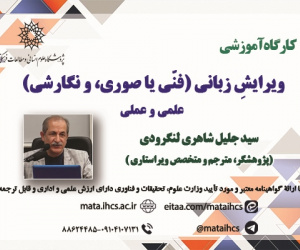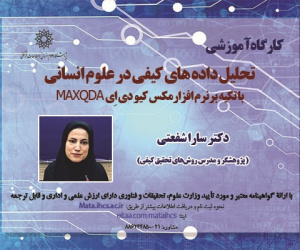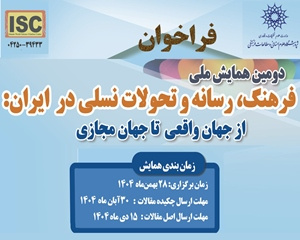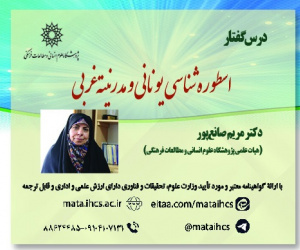طراحی هستان شناسی اشیای یادگیری الکترونیکی براساس استاندارد فراداده شیء یادگیری در مخازن سازمانی دانشگاه های علوم پزشکی ایران (مقاله علمی وزارت علوم)
درجه علمی: نشریه علمی (وزارت علوم)
آرشیو
چکیده
هدف پژوهش حاضر طراحی هستان شناسی اشیای یادگیری الکترونیکی براساس استاندارد فراداده شیء یادگیری در مخازن سازمانی دانشگاه های علوم پزشکی ایران در جهت سازمان دهی ساختارمند اشیای یادگیری است. پژوهش به لحاظ هدف از نوع پژوهش های کاربردی است. در پژوهش حاضر از روش مشاهده و پیمایش استفاده شده است و به مطابقت عناصر استاندارد فراداده شیء یادگیری با عناصر فراداده ای اشیای یادگیری در مخازن سازمانی جامعه پژوهش پرداخته شد. سپس پرسش نامه محقق ساخته برای انجام فن دلفی جهت اصلاح و اعتبارسنجی عناصر شناسایی شده در اختیار متخصصان قرار گرفت. در مرحله بعد مجموعه ای تأییدشده از عناصر و موجودیت ها برای اشیای یادگیری الکترونیکی در مخازن سازمانی دانشگاه های علوم پزشکی ایران به دست آمد. درنهایت براساس موجودیت های شناسایی شده، هستان شناسی اشیای یادگیری الکترونیکی مبتنی بر استاندارد فراداده شیء یادگیری در مخازن سازمانی دانشگاه های علوم پزشکی ایران طراحی شد. ابزار گردآوری داده ها پرسش نامه محق ساخته و چهارچوب استاندارد فراداده شیء یادگیری است. از نسخه 1.6.5 نرم افزار پروتژه برای رسمی سازی، استخراج ساختار مفهومی و رمزگذاری هستان شناسی استفاده شده است. یافته ها نشان داد هستان شناسی طراحی شده متشکل از 162 کلاس با مجموع 189 نوع رابطه و 2220 نمونه مستقر در کلاس ها مصورسازی شد. نتایج پژوهش نشان داد، استاندارد فراداده شیء یادگیری به عنوان استانداردی ترکیبی که انواع فراداده ها را شامل می شود، از جامعیت برخوردار است. بر مبنای موجودیت های شناسایی شده مبتنی بر استاندارد فراداده شیء یادگیری، هستان شناسی اشیای یادگیری الکترونیکی در مخازن سازمانی دانشگاه های علوم پزشکی ایران طراحی شد. هستان شناسی طراحی شده از صحت کلی و همچنین صحت اجزای مختلف برخوردار است. نتیجه این هستان شناسی ارائه ساختار مفهومی متشکل از مفاهیم به شکل صریح در قالبی رسمی است. با به کارگیری هستان شناسی مبتنی بر استاندارد فراداده شیء یادگیری در ساختار مخازن سازمانی دانشگاه های علوم پزشکی ایران، می توان در رفع خطاهای احتمالی موجود در سطح معنایی داده ها ازجمله بهبود بازیابی، دسترسی بهتر و طراحی نظام های هوشمند اقدام کرد.Ontological Design of E-Learning Objects based on the Learning Object Metadata Standard in Organizational Repositories of Iranian Medical Sciences Universities
IntroductionThe present research attempts to identify standard metadata elements for organizing learning objects in the organizational repositories of Iranian medical sciences universities based on the learning object metadata standard. The present research aims to design an ontology model of electronic learning objects in the organizational repositories of Iranian medical sciences universities in order to better display the identification metadata elements. From the semantic point of view, showing semantic relationships between learning objects and better retrieval of learning objects in order to take an effective step towards managing and making information resources available for e-learning. Literature ReviewThe Institute of Electrical and Electronics Engineers Learning Technology Standards Committee defines a learning object as a digital entity that can be used, reused, or referenced during learning (reusability). One of the electronic learning resources is online learning object repositories. Repositories of learning objects are basically the storage of research data and educational materials. To efficiently retrieve educational materials according to the needs of e-learners, educational materials are tagged with a set of metadata that describe educational works such as document topic, document type, etc. Metadata is an important component of learning object description resources. Metadata is also important for interoperability operations. This is because schema metadata is transferable in interoperability standards. The ontology of learning objects for the field of e-learning provides semantic connections between learning objects and provides high-level information and the development of e-learning. Therefore, the ontology of e-learning objects for organizational repositories of Iranian medical sciences universities provides accurate and meaningful learning objects for the e-learning community. The proposed ontology in this research is based on the metadata standard of the learning object and the characteristics of the learning objects to help the organizational repositories of Iranian medical sciences universities in organizing their information, quickly and accurately retrieving educational materials, facilitating the reuse of content and improving the quality of the electronic learning process and it even provides the use of objects to create a general context of learning environments using a concept map of e-learning. In fact, the ontology design of electronic learning objects for the organizational repositories of Iranian medical sciences universities based on the learning object metadata standard helps to describe the learning objects in a structured way, and this importantly improves the retrieval of learning content and better access to electronic learning content in the repositories. Methodology The purpose of the research is applied research. In the current research, the observation and survey method was used and the matching of the standard metadata elements of the learning object with the metadata elements of the learning objects in the organizational repositories of the research community was discussed. Then, the researcher-made questionnaire was provided to the experts to perform the Delphi technique in order to modify and validate the identified elements. In the next step, a verified set of elements and entities for e-learning objects was obtained in the organizational repositories of Iranian universities of medical sciences. Finally, based on the identified entities, the ontological model of electronic learning objects was designed based on the learning object metadata standard in the organizational repositories of Iranian medical sciences universities.The data collection tool is a researcher-made questionnaire and a standard metadata framework of the learning object. Version 5.6.1 of Protege software was used. During the ontology construction process, the software outputs were evaluated by experts in the field. After confirming the concepts and relationships, a conceptual structure was presented based on the findings. Results The findings showed that the designed ontological model consisting of 162 classes with a total of 189 types of relationships and 2220 samples located in the classes was illustrated. Conclusion The results of the research showed that the learning object metadata standard is comprehensive as a combined standard that includes all types of metadata. Based on the identified entities based on the learning object metadata standard, the ontological model of electronic learning objects was designed in the organizational repositories of Iranian universities of medical sciences. The designed ontology has the overall accuracy as well as the accuracy of different components. The result of this ontology is to present a conceptual structure consisting of concepts in an explicit form in a formal format. By applying ontology based on the learning object metadata standard in the structure of organizational repositories of medical sciences universities of Iran, it is possible to fix possible errors in the semantic level of data, including improving retrieval, better access, and designing intelligent systems.








